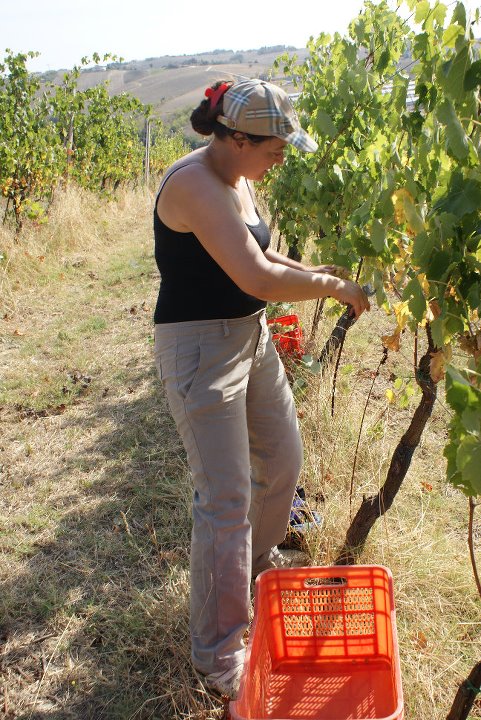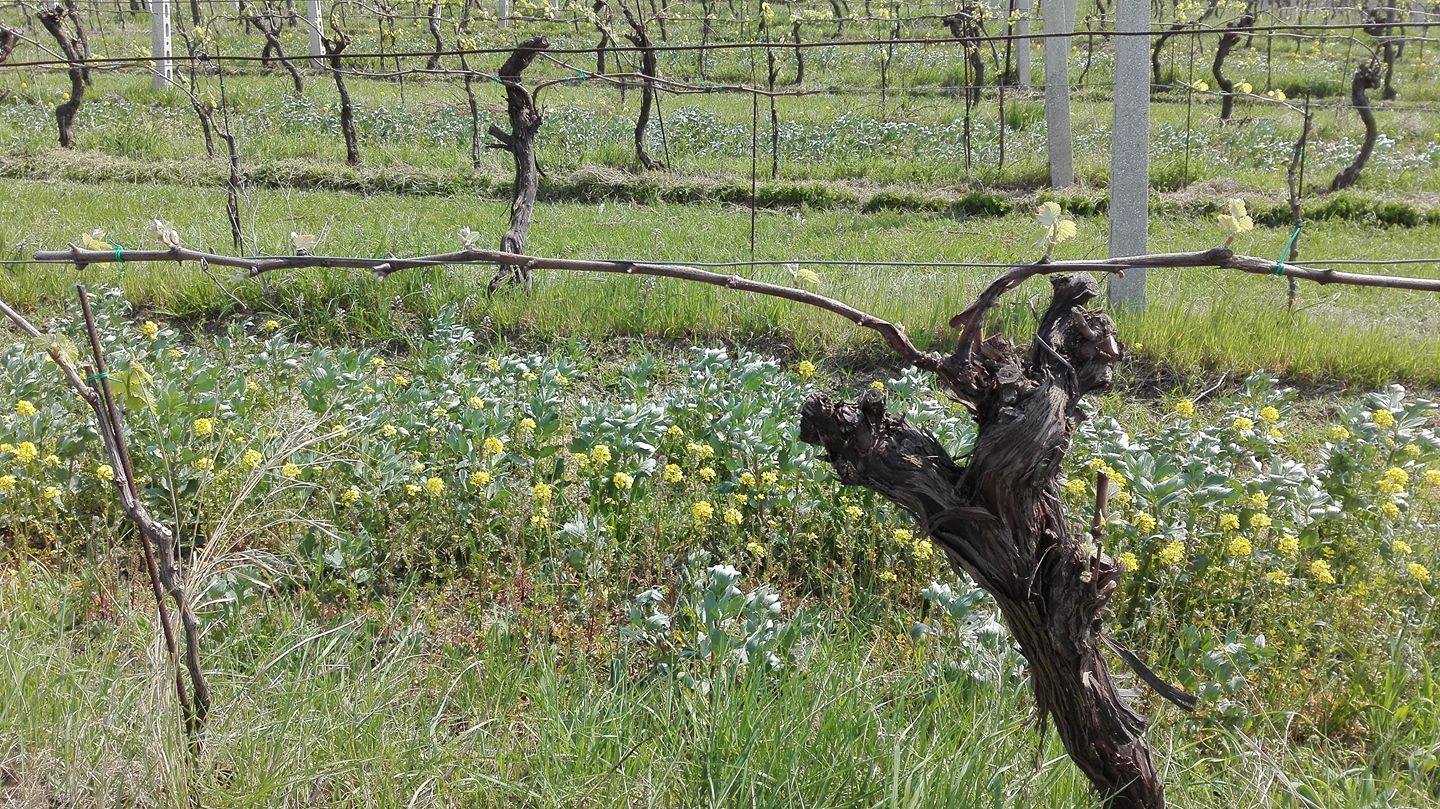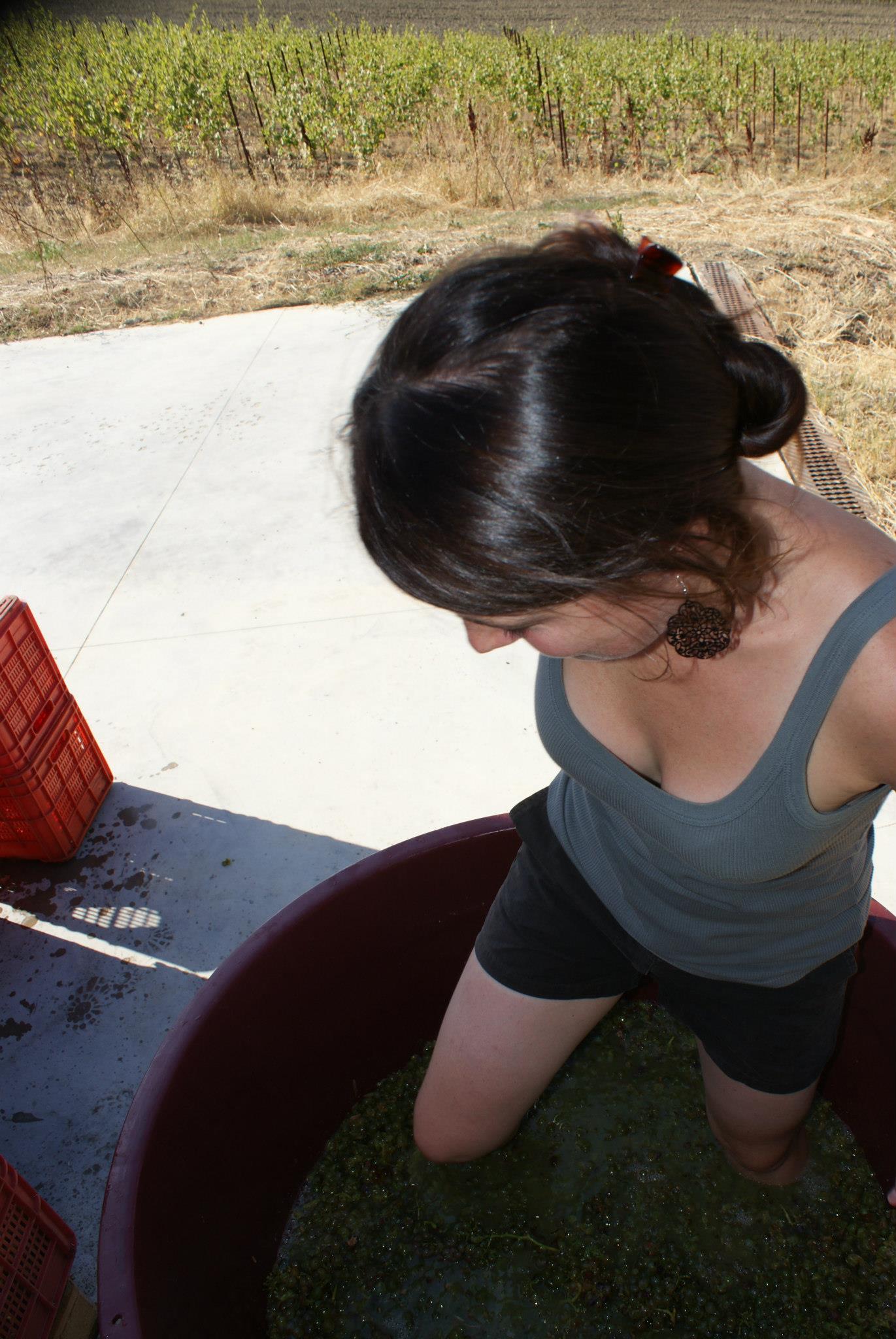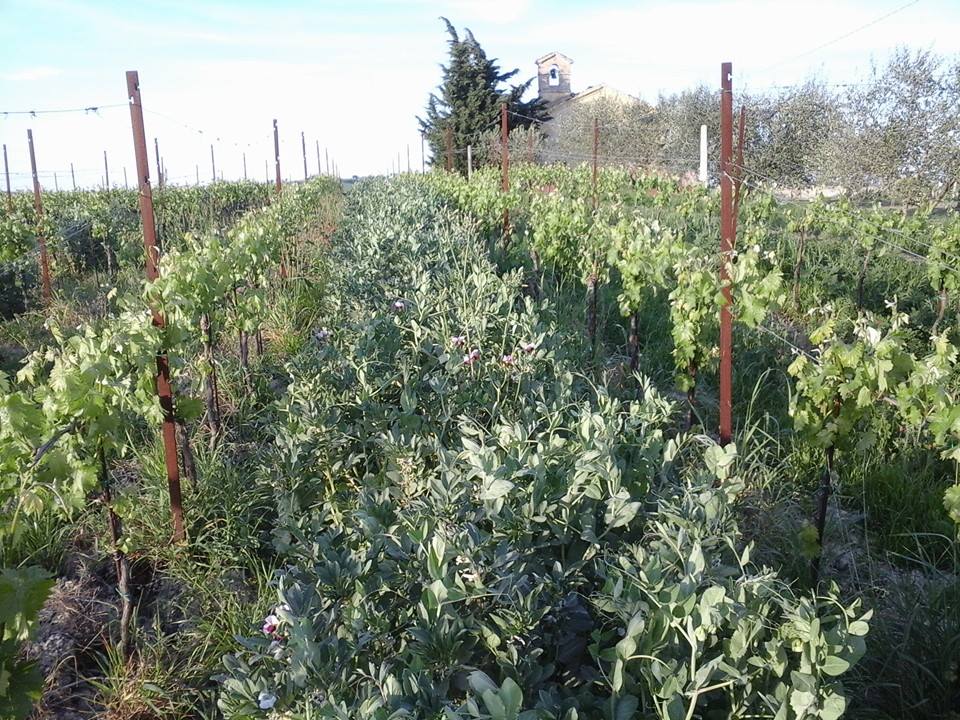
The Marche, tucked behind the knee of the Italian boot, is enviably graced with a sweep of Adriatic coastline and a sheltering ridge of inland peaks. East-west river valleys channel cool sea air over plains and up into rolling Apennine foothills. Altitude, exposition and soil type angle and shift as you move inland, giving rise to an impressive array of climatic subzones. A paramount Italian white variety and two of the country’s best-known red grapes are firmly at home here. Yet the wines are still little known outside the region and are ripe for discovery now.
Deep in geologic time, the Marche was seafloor. When the Adriatic retreated to its present contours, it left a rich bed of chalk and limestone soils. Fast forward to the early modern period, when the Marche was first an outlier (the name Marche derives from a Germanic word for border area), then a peripheral Papal state, valued mostly for its abundant agrarian output. Pilgrims crossed the territory en route to an important Catholic shrine at Loreto, slaking their thirst on Marche wines. In the 1860s, when the Vatican was forced to sell off its Marche holdings as part of Italian unification, fields of sunflowers and wheat, groves of olive trees and, above all, countless vineyards entered new hands.
 Tenant farmers, bound in a system of sharecropping, worked the lands for generations. The end goal was always yield: the greater the harvest, the greater the share retained by the farmer. In the wake of World War II, sharecropping was abandoned and farming families, with the knowledge of the land and the grapes in their blood, left for city and factory jobs. Not much later, temperature-controlled fermentation arrived in Italy. Until that point, Italian "white" wine tended to be oxidized, heavy, and more brown than white. New cooling technology enabled the production of light, fresh wines that met with instant commercial success. Most Marche winemakers simply followed demand, churning out an oversupply of watery wines that diluted the region’s vinous reputation.
Tenant farmers, bound in a system of sharecropping, worked the lands for generations. The end goal was always yield: the greater the harvest, the greater the share retained by the farmer. In the wake of World War II, sharecropping was abandoned and farming families, with the knowledge of the land and the grapes in their blood, left for city and factory jobs. Not much later, temperature-controlled fermentation arrived in Italy. Until that point, Italian "white" wine tended to be oxidized, heavy, and more brown than white. New cooling technology enabled the production of light, fresh wines that met with instant commercial success. Most Marche winemakers simply followed demand, churning out an oversupply of watery wines that diluted the region’s vinous reputation.
But over the last three decades, producers have redoubled their efforts to explore the potential of the Marche’s most promising grapes and terroirs, better understand the geology of (as yet unofficial) Marche subzones, and realize the potential of the old vines on their lands. The wines, especially the whites, are starting to show this.
“Marche white wine can be summed up in one word,” write Joe Bastianich and David Lynch, in their excellent guide to the regional wines of Italy, Vino Italiano: “Verdicchio.” Italian wine expert Ian D’Agata argues that Verdicchio can be considered “Italy’s greatest native white grape variety.” That’s exalted praise for a grape that contends with scores of challengers for the title and is still little known in the U.S. market. What have we been missing?
Verdicchio is thought to have arrived in the Marche with farmers from farther north in the mid-1600s when the came south to repopulate parts of the region that had been decimated by waves of plague. It is easy to understand why, in such unstable times, Verdicchio was embraced by Marche farmers: the grape adapts well to many terroirs, ripens slowly but evenly, and holds its acidity reliably (a key to freshness and longevity in wine). The soils of the Marche are by turns calcareous and mineral-heavy clay. Verdicchio can thrive in both. The region's typically long growing season allows grapes to hang on the vine into October, developing an array of intense and lively flavors, much as Riesling does.
The strength of Verdicchio is not on the nose, but the palate. The best wines are dry, floral and delicate. When young, they typically have a faintly sweet almond note. As they age, they may develop a compelling flintiness. The lemony salinity and bright acidity of Verdicchio make it an ideal match for the fish dishes that glint from the bowls on Marche tables.
There are two main regions for the grape in the Marche: Castelli di Jesi and Matelica. Wine writer Michaela White sums up the differences: “Jesi is the Verdicchio that sees the sea, Matelica is the Verdicchio of the mountains.”
The wines of Jesi have a marine wash of citrus, resin and herbs. A slight bitterness on the finish (an essential element of the Italian palate) is a hallmark. The wines of Matelica, which sits much closer to the Apennines and is therefore higher in altitude, are correspondingly more finely structured, with greater acidity, body and alcohol. However, D’Agata cautions that Verdicchio wines even from these two areas “can be wildly different depending on the subzone they come from.” Defining these subzones will be a critical step in helping Marche Verdicchio gain recognition in the wider world.
 Verdicchio can also give interesting sparkling and sweet wines. A handful of producers sustain the traditions of vinifying the grape as a spumante, capitalizing on the grape’s high acidity, and as a sweet wine made from botrytized grapes. Though it lacks the aromatic allure of other noble sweet wines, the dolce version is often smoky and intense.
Verdicchio can also give interesting sparkling and sweet wines. A handful of producers sustain the traditions of vinifying the grape as a spumante, capitalizing on the grape’s high acidity, and as a sweet wine made from botrytized grapes. Though it lacks the aromatic allure of other noble sweet wines, the dolce version is often smoky and intense.
Bastianich and Lynch note that the Marche “seems caught in the middle, with one eye on the fragrant white wines of the north and the other on the plump reds of the south.” Marche reds, though lesser known than the whites, are certainly no afterthought. In the Conero zone, which sits directly on the coast, Montepulciano and Sangiovese -- grapes much more famously at home in Abruzzo to the south and Tuscany and Umbria, due west -- thrive. Here, Montepulciano gives inky, structured wines, sometimes blended and brightened with Sangiovese. Less common but also worth seeking out is Lacrima, an aromatic grape that, in the Marche, yields reds with a vivid, floral freshness.
The Marche now holds its fate in its own hands. Will it stake a claim for Verdicchio's true grand crus? Will Marche producers invest in efforts to acquaint the wider world with their wines? Can the surging market for natural, organic and biodynamic wines be part of the Marche story? The best way to find out is to open a few bottles and watch the tale unfold in your glass.
For more on the Marche check out
I’ll Drink To That, Episode 427,
Vino Italiano, J. Bastianich and D. Lynch, 2005,
Native Wine Grapes of Italy, Ian D’Agata, 2014
Grape Collective talks to Silvano Brescianini CEO of the biodynamic estate Pievalta in Marche (and Barone Pizzone in Franciacorta) about the Marche and the greatness of Verdicchio. The Pievalta winery is located in Maiolati Spontini township, Ancona province, in the heart of the Castelli di Jesi.
 Grape Collective: Talk about Verdicchio, what kind of grape is it?
Grape Collective: Talk about Verdicchio, what kind of grape is it?
Silvano Brescianini: Verdicchio is an Italian grape variety that grows only in Italy and in Italy only in Castelli di Jesi. If you go back to the '70s or '80s the classic Italian white was Soave, Verdicchio, Fiano. And these wines can age very well. Unfortunately there is not a culture about old whites but Verdicchio for sure can age 10 to 20 years. And it is the kind of grape that is not aromatic but the classical notes for Verdicchio are almonds, dry nuts and aromatic herbs. It is a grape you really taste in the palate.
Because the region of Castelli di Jesi has different soil you can feel the palate with the different soils. On the left side of the valley you have more clay and the wines are more elegant. On the right, often on hills, we have tufo - it's called tufo but it's not tufo - it is a sandy rock soil that keeps the humidity and the nutrients in the rocks in the summer. And in this way the roots go deeper and can add more minerality to the grape giving it more taste and more character.
It is a different expression. It's a grape variety that is different - it's not Chardonnay, it's not Sauvignon Blanc but it is really tasty. It has a big part in traditional classic Italian whites.
So you were a chef in New York. How did you go from being a chef in New York to making wine?
I had an opportunity to work at San Domenico in 1998. An unbelievable experience. I was in the restaurant business so when we bought Pizzini the winery from the Barones in 1992, I was on the team to open a restaurant inside of the winery and we did. But the same year we opened the restaurant a friend of mine who was the manager of the cellar died in a car accident. That is why I started to produce wine. I started with a consumer approach - with a sommelier approach.
I was surprised to see how many pesticides were used in farming. So I tried to find a different way. So that is why in 1998 Pizzini became the first organic estate in the region.
 When you are the first, there is no previous experience and you have to learn from your mistakes and of course we did. At the same time we showed the evidence that it was possible. Twenty years ago it was talking about organics - it was untrusted - people didn’t believe it was the way to get a better wine.
When you are the first, there is no previous experience and you have to learn from your mistakes and of course we did. At the same time we showed the evidence that it was possible. Twenty years ago it was talking about organics - it was untrusted - people didn’t believe it was the way to get a better wine.
But my compass was very simple that you should not use poison to produce grapes. It doesn't make sense. Right now I am very glad because in Franciacorta more than 60 vineyards are organic. Working with other producers we build up knowledge and experience.
At the same time we worked with the university in order to understand the connection between the biodiversity of the soil, especially underground and the quality of the wine. And just a few universities around the world are studying this. It makes sense. Wine is the product that shows the difference between soil and other soil. In order to do this the soil must be alive.
I know it sounds stupid but it is not so popular. And the vine has to be healthy with strong deep roots to take the nutrients in the soil in order to bring them to the glass. The target is to have quality wine, of course organic, but also wine that brings the characteristics of our vineyards.
Our vineyards are different from the other vineyards. Today it is very important to have wine that shows the characteristics of the vineyards.
 What are the characteristics of Le Marche region?
What are the characteristics of Le Marche region?
It is probably one of the underrated regions. I don’t know why. I think the producers don’t know how interesting the place is. It has one of the most interesting white grape varieties in Italy, beautiful food, beautiful landscapes. Very interesting juxtaposition of soils. From 200 meters to 500 meters. It is a wine that is very Italian and very elegant and powerful. It can match elegance and stature.
What kinds of wines come out of Marche?
In Italy every region has their own local grapes and local wines. The most popular in Marche is of course Verdicchio. In the south of the region around Ascoli Piceno the varieties are Sangiovese and Montepulciano - they also do a white variety like Pecorino. Near Ancona there is the Rosso Piceno and there is Rosso Conero and Conero is the mountain near Ancona. Rosso Conero is a blend between Sangiovese and Montepulciano. We also have another white called Bianchello del Metauro. And there is also a very strange wine called Vernaccia di Serrapetrona which is a red sparkling. And an extraordinary quality of olive oil.
In terms of the Marche region what has to happen for people to know more about the wines?
It is not the point of the consumer. It is the point of the producer. The producer needs to invest more. Because they have the quality - they have an unbelievable potential. They have to invest in bringing bottles around the world to explain what we are doing. And bring people to Le Marche to discover it. Tourists who visit Le Marche are very happy and they come back. In Marche they have the mountains, they have the beach. You have beautiful food. You have history. Rafaelo is not from Tuscany he is from Marche. Urbino is a beautiful city and in less than 40 minutes by car you can go to the beach or to the mountains.
 You make biodynamic wines in Le Marche. Why did you decide to make wines in that method?
You make biodynamic wines in Le Marche. Why did you decide to make wines in that method?
We bought an old vineyard in 2002. The previous owner sold grapes to a big cellar. He tried to push with nitrogen and produce as much as possible. Right now we produce 50% less than before. We try to keep the vines in a balance. Of course in organics - in biodynamics we use the 500 and the 501 to try to get a better life in the soil because the first 10 years we spent trying to rebuild the soil's life. And it has worked.
How are biodynamic wines different?
It is not easy to compare with a scientific approach. But for sure when the winemaker is working biodynamic the people who work are more connected and are closer to the soil and spend more time by the soil in the vineyard. Our winemaker who manages the cellar spends a lot of time there and tries to rebuild the life of the soil. Soil life is the first step in creating difference and identities in the wines.
And your wines are vegan? How is that?
The first time our customers asked about vegan wine I was a bit surprised. A few people know that in order to clean the wines some products are used which are normal. The classic are egg whites in a barrique or jelly from fish. Today we clean the wines using bentonite from clay without using any animal products. It is a good way of respecting the customers who don’t want any animal products.
Read more from Valerie Kathawala on Grape Collective.










